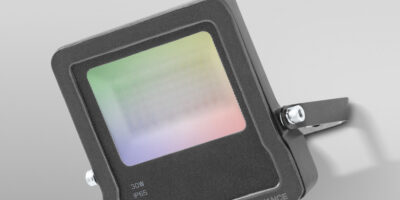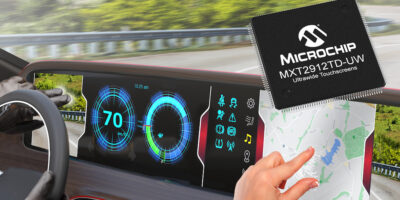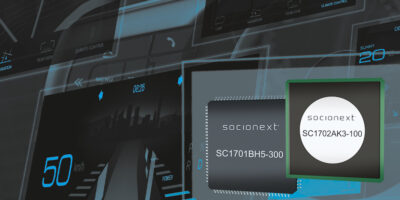Smart luminaires for indoor and outdoor installations have been introduced by Ledvance. The Smart+ range can be controlled via remote, app or voice. The range includes panel and flood luminaires, a neon flex strip and camera functions.
The wall and ceiling assortment includes round luminaires in a decorative design as well as sleek and timeless panel luminaires. For outdoor installations, Ledvance offers products for mood, decorative lighting and security purposes. The Neon Flex TGBW LED strips are designed for indoors and outdoors and offer a smooth and seamless illumination with RGB and tuneable white option. All new smart luminaires are easily and quickly installed and are available now, says Ledvance.
The Smart+ Wi-Fi Planon are smart panel luminaires that will slot seamlessly into any indoor installation. The Smart+ Planon comes in three different form factors including square versions measuring 300, 400 or 600mm (20W/ 28W/ 40W) in length, frameless rectangular option in six sizes (20W/ 28W/ 35W/ 40W) or as frameless round luminaires with two diameters (20W/ 28W). All Smart+ WIFI Planon models feature tuneable white and some also RGB functions, and can be connected via Wi-Fi. Using the Ledvance Wi-Fi app or a speaker device, users can control the luminaire and timer or select dynamic lighting options by switching from warm to cool light with tuneable white.
The slim, lightweight, robust and durable Smart+ Wi-Fi flood luminaires are for garden illuminations. The luminaire’s tempered glass cover with semi-frosted finish allows for a very homogenous illumination and the smart and intelligent control options enable both general lighting as well as mood lighting. The luminaires can be controlled by app or a voice controlled speaker device within the local Wi-Fi, to change colours, dim the light or to switch it on/off. The IP65 certified luminaries are available in four versions (10W/ 20W/ 30W/ 50W).
There is also the Smart+ Wi-Fi Flood camera which combines a sensor luminaire with rotatable luminaire head and camera security function. Its 180 degree sensor detection range, five to 10m sensor range and high brightness of 1800lm ensure a high level of safety for security. The camera offers app controlled 1920 x 1080 HD live view functionality as well as 40 degrees vertical and 355 degrees horizontal rotation angles. It also features a built-in microphone and siren speaker with alarm function, and an IP44 rating. The luminaire can be controlled via Ledvance Wi-Fi app or speaker device.
The Smart+ Wi-Fi Neon Flex strip offers a diffuse light appearance with invisible single LED dots for colourful light accents in indoor and outdoor environments. They feature two different white light colours as well as RGB and (tuneable) white in one strip. The app- or speaker-controlled smart LED strips are available as three and five metre versions. The flexible, bendable LED strips are easily installed to provide indirect and direct lighting for gardens, balconies, walls, stairs, cupboards and shelves and many other outdoor and indoor areas.







